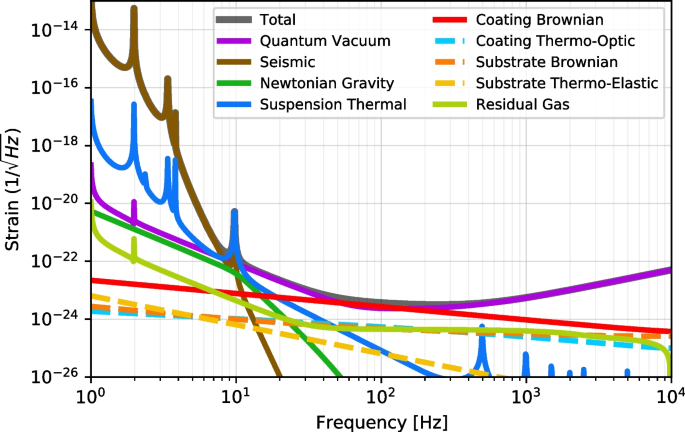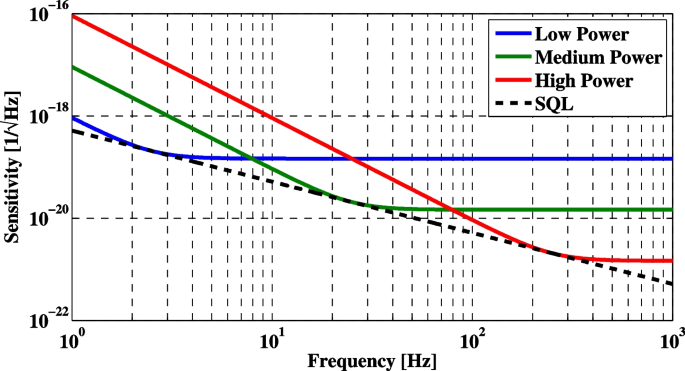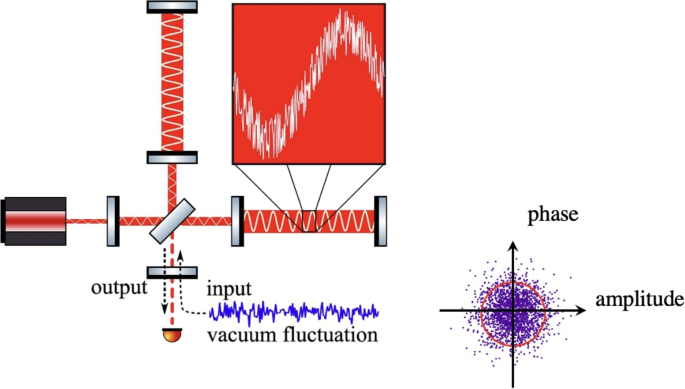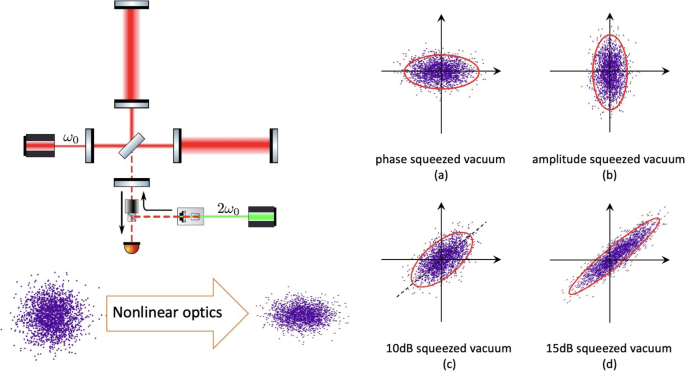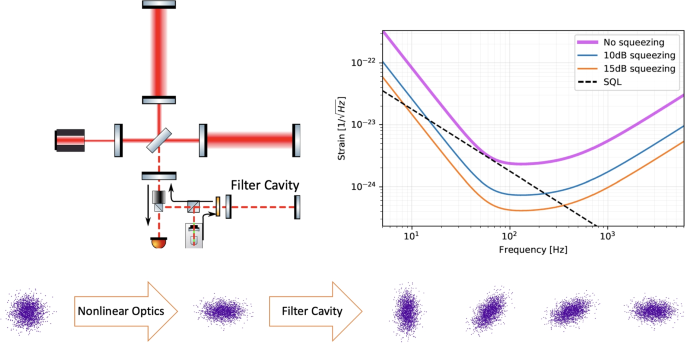-
X.Y. Lü, Y. Wu, J. Johansson, H. Jing, J. Zhang, F. Nori, Squeezed optomechanics with phase-matched amplification and dissipation. Phys. Rev. Lett. 114(9), 093602 (2015)
-
M. Asjad, S. Zippilli, D. Vitali, Suppression of stokes scattering and improved optomechanical cooling with squeezed light. Phys. Rev. A 94(5), 051801 (2016)
-
J.B. Clark, F. Lecocq, R.W. Simmonds, J. Aumentado, J.D. Teufel, Sideband cooling beyond the quantum backaction limit with squeezed light. Nature 541(7636), 191–195 (2017)
-
N. Didier, A. Kamal, W.D. Oliver, A. Blais, A.A. Clerk, Heisenberg-limited qubit read-out with two-mode squeezed light. Phys. Rev. Lett. 115(9), 093604 (2015)
-
W. Qin, A. Miranowicz, P.B. Li, X.Y. Lü, J.Q. You, F. Nori, Exponentially enhanced light-matter interaction, cooperativities, and steady-state entanglement using parametric amplification. Phys. Rev. Lett. 120(9), 093601 (2018)
-
Y.H. Chen, W. Qin, X. Wang, A. Miranowicz, F. Nori, Shortcuts to adiabaticity for the quantum rabi model: Efficient generation of giant entangled cat states via parametric amplification. Phys. Rev. Lett. 126(2), 023602 (2021)
-
W. Qin, V. Macrì, A. Miranowicz, S. Savasta, F. Nori, Emission of photon pairs by mechanical stimulation of the squeezed vacuum. Phys. Rev. A 100(6), 062501 (2019)
-
M. Asjad, N.E. Abari, S. Zippilli, D. Vitali, Optomechanical cooling with intracavity squeezed light. Opt. Express 27(22), 32427–32444 (2019)
-
W. Qin, A. Miranowicz, H. Jing, F. Nori, Generating long-lived macroscopically distinct superposition states in atomic ensembles. Phys. Rev. Lett. 127(9), 093602 (2021)
-
H.S. Zhong, H. Wang, Y.H. Deng, M.C. Chen, L.C. Peng, Y.H. Luo, J. Qin, D. Wu, X. Ding, Y. Hu et al., Quantum computational advantage using photons. Science 370(6523), 1460–1463 (2020)
-
H.S. Zhong, Y.H. Deng, J. Qin, H. Wang, M.C. Chen, L.C. Peng, Y.H. Luo, D. Wu, S.Q. Gong, H. Su et al., Phase-programmable gaussian boson sampling using stimulated squeezed light. Phys. Rev. Lett. 127(18), 180502 (2021)
-
W. Qin, A. Miranowicz, F. Nori, Beating the 3 db limit for intracavity squeezing and its application to nondemolition qubit readout. (2022). arXiv preprint arXiv:2203.06892
-
S.C. Burd, R. Srinivas, H.M. Knaack, W. Ge, A.C. Wilson, D.J. Wineland, D. Leibfried, J.J. Bollinger, D. Allcock, D. Slichter, Quantum amplification of boson-mediated interactions. Nat. Phys. 17(8), 898–902 (2021)
-
W. Qin, Y.H. Chen, X. Wang, A. Miranowicz, F. Nori, Strong spin squeezing induced by weak squeezing of light inside a cavity. Nanophotonics 9(16), 4853–4868 (2020)
-
R. Owen, J. Brink, Y. Chen, J.D. Kaplan, G. Lovelace, K.D. Matthews, D.A. Nichols, M.A. Scheel, F. Zhang, A. Zimmerman, K.S. Thorne, Frame-dragging vortexes and tidal tendexes attached to colliding black holes: visualizing the curvature of spacetime. Phys. Rev. Lett. 106(15), 151101 (2011). https://doi.org/10.1103/PhysRevLett.106.151101
-
GWINC: Gravitational Wave Interferometer Noise Calculator. http://lhocds.ligo-wa.caltech.edu:8000/advligo/GWINC. V1 default parameters
-
J.M. Hensley, A. Peters, S. Chu, Active low frequency vertical vibration isolation. Rev. Sci. Instrum. 70(6), 2735 (1999)
-
D.B. Newell, S.J. Richman, P.G. Nelson, R.T. Stebbins, P.L. Bender, J.E. Faller, J. Mason, An ultra-low-noise, low-frequency, six degrees of freedom active vibration isolator. Rev. Sci. Instrum. 68(8), 3211 (1997)
-
F. Matichard, et al., Advanced LIGO two-stage twelve-axis vibration isolation and positioning platform. Part 1: Design and production overview. (2014). arXiv:1407.6377
-
F. Matichard, et al., Advanced LIGO two-stage twelve-axis vibration isolation and positioning platform. Part 2: Experimental investigation and tests results. (2014). arXiv:1407.6324
-
S.M. Aston et al., Update on quadruple suspension design for Advanced LIGO. Class. Quant. Grav. 29(23), 235004 (2012). https://doi.org/10.1088/0264-9381/29/23/235004
-
R. Bassiri, K. Evans, K. Borisenko, M. Fejer, J. Hough, I. MacLaren, I. Martin, R. Route, S. Rowan, Correlations between the mechanical loss and atomic structure of amorphous TiO2-doped Ta2O5 coatings. Acta Mater. 61(4), 1070–1077 (2013)
-
K. Evans, R. Bassiri, I. Maclaren, S. Rowan, I. Martin, J. Hough, K. Borisenko, Reduced density function analysis of titanium dioxide doped tantalum pentoxide. J. Phys. Conf. Ser. 371, 012058 (2012)
-
T. Hong, H. Yang, E.K. Gustafson, R.X. Adhikari, Y. Chen, Brownian thermal noise in multilayer coated mirrors. Phys. Rev. D87(8), 082001 (2013)
-
R. Flaminio, J. Franc, C. Michel, N. Morgado, L. Pinard et al., A study of coating mechanical and optical losses in view of reducing mirror thermal noise in gravitational wave detectors. Class. Quant. Grav. 27, 084030 (2010). https://doi.org/10.1088/0264-9381/27/8/084030
-
N. Kondratiev, A. Gurkovsky, M. Gorodetsky, Thermal noise and coating optimization in multilayer dielectric mirrors. Phys. Rev. D 84, 022001 (2011). https://doi.org/10.1103/PhysRevD.84.022001
-
G.M. Harry, M.R. Abernathy, A.E. Becerra-Toledo, H. Armandula, E. Black et al., Titania-doped tantala/silica coatings for gravitational-wave detection. Class. Quant. Grav. 24, 405–416 (2007). https://doi.org/10.1088/0264-9381/24/2/008
-
G.M. Harry, H. Armandula, E. Black, D.R.M. Crooks, G. Cagnoli, J. Hough, P. Murray, S. Reid, S. Rowan, P. Sneddon, M.M. Fejer, R. Route, S.D. Penn, Thermal noise from optical coatings in gravitational wave detectors. Appl. Opt. 45(7), 1569 (2006)
-
G.M. Harry, A.M. Gretarsson, P.R. Saulson, S.E. Kittelberger, S.D. Penn et al., Thermal noise in interferometric gravitational wave detectors due to dielectric optical coatings. Class. Quant. Grav. 19, 897–918 (2002). https://doi.org/10.1088/0264-9381/19/5/305
-
S. Rowan, J. Hough, D. Crooks, Thermal noise and material issues for gravitational wave detectors. Phys. Lett. A 347, 25–32 (2005). https://doi.org/10.1016/j.physleta.2005.06.055
-
V.B. Braginsky, S.P. Vyatchanin, Thermodynamical fluctuations in optical mirror coatings. Phys. Lett. A 312, 244–255 (2003). https://doi.org/10.1016/S0375-9601(03)00473-0
-
S.D. Penn, P.H. Sneddon, H. Armandula, J.C. Betzwieser, G. Cagnoli et al., Mechanical loss in tantala / silica dielectric mirror coatings. Class. Quant. Grav. 20, 2917–2928 (2003). https://doi.org/10.1088/0264-9381/20/13/334
-
M. Evans, S. Ballmer, M. Fejer, P. Fritschel, G. Harry et al., Thermo-optic noise in coated mirrors for high-precision optical measurements. Phys. Rev. D 78, 102003 (2008). https://doi.org/10.1103/PhysRevD.78.102003
-
G. Harry, T. Bodiya, R. DeSalvo, Optical Coatings and Thermal Noise in Precision Measurement. Cambridge: Cambridge University Press. (2012). https://doi.org/10.1017/CBO9780511762314, https://www.cambridge.org/core/books/optical-coatings-and-thermal-noise-in-precisionmeasurement/705BC46F0FC70827BF8C986F07489A1B
-
J.C. Driggers, J. Harms, R.X. Adhikari, Subtraction of Newtonian noise using optimized sensor arrays. Phys. Rev. D 86, 102001 (2012). https://doi.org/10.1103/PhysRevD.86.102001
-
J. Harms, S. Hild, Passive Newtonian noise suppression for gravitational-wave observatories based on shaping of the local topography. Class. Quant. Grav. 31, 185011 (2014). https://doi.org/10.1088/0264-9381/31/18/185011
-
C. Caves, Quantum mechanical noise in an interferometer. Phys. Rev. D 23, 1693–1708 (1981). https://doi.org/10.1103/PhysRevD.23.1693
-
C.M. Caves, B.L. Schumaker, New formalism for two-photon quantum optics. 1. Quadrature phases and squeezed states. Phys. Rev. A31, 3068–3092 (1985). https://doi.org/10.1103/PhysRevA.31.3068
-
B.L. Schumaker, C.M. Caves, New formalism for two-photon quantum optics. 2. Mathematical foundation and compact notation. Phys. Rev. A31, 3093–3111 (1985). https://doi.org/10.1103/PhysRevA.31.3093
-
R. Loudon, Quantum limit on the Michelson interferometer used for gravitational wave detection. Phys. Rev. Lett. 47, 815–818 (1981). https://doi.org/10.1103/PhysRevLett.47.815
-
V.B. Braginsky, F.Y. Khalili, Quantum Measurement (Cambridge University Press, 1999)
-
P. Hello, J. Vinet, Numerical model of transient thermal effects in high power optical resonators. J. Phys. (France) 51, 1267 (1990)
-
W. Winkler, K. Danzmann, A. Rüdiger, R. Schilling, Heating by optical absorption and the performance of interferometric gravitational wave detectors. Phys. Rev. A 44, 7022–7036 (1991). https://doi.org/10.1103/PhysRevA.44.7022
-
R. Lawrence, D. Ottaway, M. Zucker, P. Fritschel, Active correction of thermal lensing through external radiative thermal actuation. Opt. Lett. 29, 2635 (2004)
-
P.R. Saulson, Fundamentals of Interferometric Gravitational Wave Detectors, 2nd edn. (World Scientific, 2017). https://doi.org/10.1142/10116
-
J. Aasi, B.P. Abbott, R. Abbott, T. Abbott, M.R. Abernathy, K. Ackley et al., Advanced ligo. Class. Quantum Gravity 32, 074001 (2015). https://doi.org/10.1088/0264-9381/32/7/074001
-
B.P. Abbott, R. Abbott, T.D. Abbott, M.R. Abernathy, F. Acernese, K. Ackley et al., Observation of gravitational waves from a binary black hole merger. Phys. Rev. Lett. 116(6), 061102 (2016). https://doi.org/10.1103/PhysRevLett.116.061102
-
The LIGO Scientific Collaboration, et al., GWTC-3: Compact Binary Coalescences Observed by LIGO and Virgo During the Second Part of the Third Observing Run. (2021). arXiv e-prints arXiv:2111.03606
-
R.A. Konoplya, Z. Stuchlík, A. Zhidenko, Echoes of compact objects: new physics near the surface and matter at a distance. Phys. Rev. D 99(2), 024007 (2019). https://doi.org/10.1103/PhysRevD.99.024007
-
A.L. Piro, B. Giacomazzo, R. Perna, The fate of neutron star binary mergers. Astrophys. J. Lett. 844(2), L19 (2017). https://doi.org/10.3847/2041-8213/aa7f2f
-
H. Miao, H. Yang, D. Martynov, Towards the design of gravitational-wave detectors for probing neutron-star physics. Phys. Rev. D 98, 044044 (2018). https://doi.org/10.1103/PhysRevD.98.044044
-
D. Martynov, H. Miao, H. Yang, F.H. Vivanco, E. Thrane, R. Smith, P. Lasky, W.E. East, R. Adhikari, A. Bauswein, A. Brooks, Y. Chen, T. Corbitt, A. Freise, H. Grote, Y. Levin, C. Zhao, A. Vecchio, Exploring the sensitivity of gravitational wave detectors to neutron star physics. Phys. Rev. D 99, 102004 (2019). https://doi.org/10.1103/PhysRevD.99.102004
-
Ligo Scientific Collaboration, J. Abadie, B.P. Abbott, R. Abbott, T.D. Abbott, M. Abernathy, C. Adams et al., A gravitational wave observatory operating beyond the quantum shot-noise limit. Nat. Phys. 7(12), 962–965 (2011). https://doi.org/10.1038/nphys2083
-
S.E. Dwyer, G.L. Mansell, L. McCuller, Squeezing in gravitational wave detectors. Galaxies 10(2), 46 (2022). https://doi.org/10.3390/galaxies10020046
-
S. Chua, M. Stefszky, C. Mmow-Lowry, B.C. Buchler, K. McKenzie, D.A. Shaddock, P.K. Lam, D.E. McClelland, Quantum squeezing in advanced gravitational wave detectors. Int. J. Mod. Phys. D 20(10), 2043–2049 (2011). https://doi.org/10.1142/S0218271811020159
-
C.M. Caves, B.L. Schumaker, New formalism for two-photon quantum optics. I. Quadrature phases and squeezed states. Phys. Rev. A 31(5), 3068–3092 (1985). https://doi.org/10.1103/PhysRevA.31.3068
-
B.L. Schumaker, C.M. Caves, New formalism for two-photon quantum optics. II. Mathematical foundation and compact notation. Phys. Rev. A 31(5), 3093–3111 (1985). https://doi.org/10.1103/PhysRevA.31.3093
-
H. Grote, K. Danzmann, K.L. Dooley, R. Schnabel, J. Slutsky, H. Vahlbruch, First long-term application of squeezed states of light in a gravitational-wave observatory. Phys. Rev. Lett. 110(18), 181101 (2013). https://doi.org/10.1103/PhysRevLett.110.181101
-
K. McKenzie, M.B. Gray, S. Goßler, P.K. Lam, D.E. McClelland, Squeezed state generation for interferometric gravitational-wave detection. Class. Quantum Gravity 23(8), S245–S250 (2006). https://doi.org/10.1088/0264-9381/23/8/S31
-
J. Aasi, J. Abadie, B.P. Abbott, R. Abbott, T.D. Abbott, M.R. Abernathy et al., Enhanced sensitivity of the LIGO gravitational wave detector by using squeezed states of light. Nat. Photonics 7(8), 613–619 (2013). https://doi.org/10.1038/nphoton.2013.177
-
M.S. Stefszky, C.M. Mow-Lowry, S.S.Y. Chua, D.A. Shaddock, B.C. Buchler, H. Vahlbruch, A. Khalaidovski, R. Schnabel, P.K. Lam, D.E. McClelland, Balanced homodyne detection of optical quantum states at audio-band frequencies and below. Class. Quantum Gravity 29(14), 145015 (2012). https://doi.org/10.1088/0264-9381/29/14/145015
-
L. Barsotti, J. Harms, R. Schnabel, Squeezed vacuum states of light for gravitational wave detectors. Rep. Prog. Phys. 82(1), 016905 (2019). https://doi.org/10.1088/1361-6633/aab906
-
H.J. Kimble, Y. Levin, A.B. Matsko, K.S. Thorne, S.P. Vyatchanin, Conversion of conventional gravitational-wave interferometers into quantum nondemolition interferometers by modifying their input and/or output optics. Phys. Rev. D 65(2), 022002 (2001)
-
S.L. Danilishin, F.Y. Khalili, H. Miao, Advanced quantum techniques for future gravitational-wave detectors. Living Rev. Relativ. 22(1), 2 (2019). https://doi.org/10.1007/s41114-019-0018-y
-
H.J. Kimble, Y. Levin, A.B. Matsko, K.S. Thorne, S.P. Vyatchanin, Conversion of conventional gravitational-wave interferometers into quantum nondemolition interferometers by modifying their input and/or output optics. Phys. Rev. D 65(2), 022002 (2001). https://doi.org/10.1103/PhysRevD.65.022002
-
S. Chelkowski, H. Vahlbruch, B. Hage, A. Franzen, N. Lastzka, K. Danzmann, R. Schnabel, Experimental characterization of frequency-dependent squeezed light. Phys. Rev. A 71(1), 013806 (2005). https://doi.org/10.1103/PhysRevA.71.013806
-
E. Oelker, T. Isogai, J. Miller, M. Tse, L. Barsotti, N. Mavalvala, M. Evans, Audio-band frequency-dependent squeezing for gravitational-wave detectors. Phys. Rev. Lett. 116(4), 041102 (2016). https://doi.org/10.1103/PhysRevLett.116.041102
-
...Y. Zhao, N. Aritomi, E. Capocasa, M. Leonardi, M. Eisenmann, Y. Guo, E. Polini, A. Tomura, K. Arai, Y. Aso, Y.C. Huang, R.K. Lee, H. Lück, O. Miyakawa, P. Prat, A. Shoda, M. Tacca, R. Takahashi, H. Vahlbruch, M. Vardaro, C.M. Wu, M. Barsuglia, R. Flaminio, Frequency-dependent squeezed vacuum source for broadband quantum noise reduction in advanced gravitational-wave detectors. Phys. Rev. Lett. 124(17), 171101 (2020). https://doi.org/10.1103/PhysRevLett.124.171101
-
L. McCuller, C. Whittle, D. Ganapathy, K. Komori, M. Tse, A. Fernandez-Galiana, L. Barsotti, P. Fritschel, M. MacInnis, F. Matichard, K. Mason, N. Mavalvala, R. Mittleman, H. Yu, M.E. Zucker, M. Evans, Frequency-dependent squeezing for advanced LIGO. Phys. Rev. Lett. 124(17), 171102 (2020). https://doi.org/10.1103/PhysRevLett.124.171102
-
E. Genin, M. Mantovani, G. Pillant, C.D. Rossi, L. Pinard, C. Michel, M. Gosselin, J. Casanueva, Vacuum-compatible low-loss faraday isolator for efficient squeezed-light injection in laser-interferometer-based gravitational-wave detectors. Appl. Opt. 57(32), 9705–9713 (2018). https://doi.org/10.1364/AO.57.009705
-
...S.S.Y. Chua, S. Dwyer, L. Barsotti, D. Sigg, R.M.S. Schofield, V.V. Frolov, K. Kawabe, M. Evans, G.D. Meadors, M. Factourovich, R. Gustafson, N. Smith-Lefebvre, C. Vorvick, M. Landry, A. Khalaidovski, M.S. Stefszky, C.M. Mow-Lowry, B.C. Buchler, D.A. Shaddock, P.K. Lam, R. Schnabel, N. Mavalvala, D.E. McClelland, Impact of backscattered light in a squeezing-enhanced interferometric gravitational-wave detector. Class. Quantum Gravity 31(3), 035017 (2014). https://doi.org/10.1088/0264-9381/31/3/035017
-
T. Isogai, J. Miller, P. Kwee, L. Barsotti, M. Evans, Loss in long-storage-time optical cavities. Opt. Express 21(24), 30114–30125 (2013). https://doi.org/10.1364/OE.21.030114
-
H.T. Cao, A. Brooks, S.W.S. Ng, D. Ottaway, A. Perreca, J.W. Richardson, A. Chaderjian, P.J. Veitch, High dynamic range thermally actuated bimorph mirror for gravitational wave detectors. Appl. Opt. 59(9), 2784–2790 (2020). https://doi.org/10.1364/AO.376764
-
V. Srivastava, G. Mansell, C. Makarem, M. Noh, R. Abbott, S. Ballmer, G. Billingsley, A. Brooks, H.T. Cao, P. Fritschel, D. Griffith, W. Jia, M. Kasprzack, M. MacInnis, S. Ng, L. Sanchez, C. Torrie, P. Veitch, F. Matichard, Piezo-deformable mirrors for active mode matching in advanced ligo. Opt. Express 30(7), 10491–10501 (2022). https://doi.org/10.1364/OE.445088
-
T.C. Ralph, M.S. Taubman, A.G. White, D.E. McClelland, H.A. Bachor, Squeezed light from second-harmonic generation: experiment versus theory. Opt. Lett. 20(11), 1316–1318 (1995). https://doi.org/10.1364/OL.20.001316


